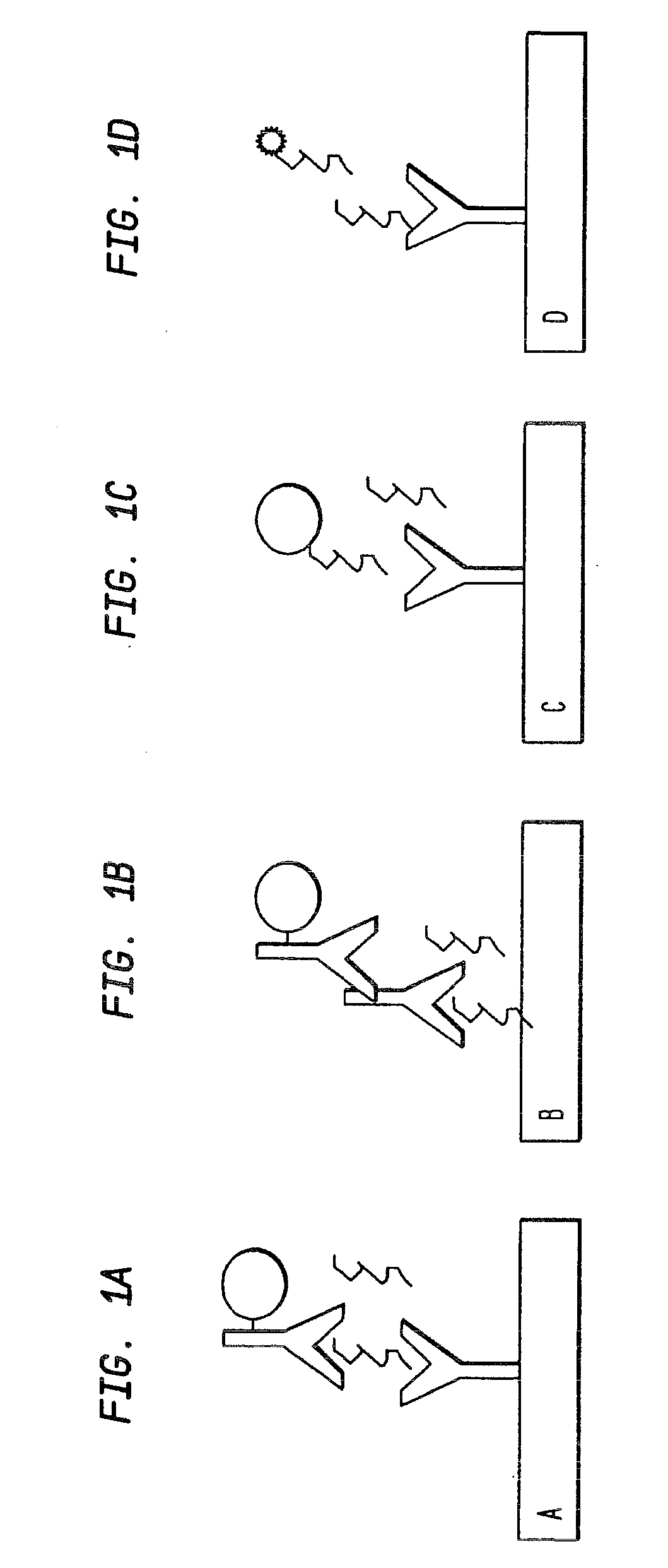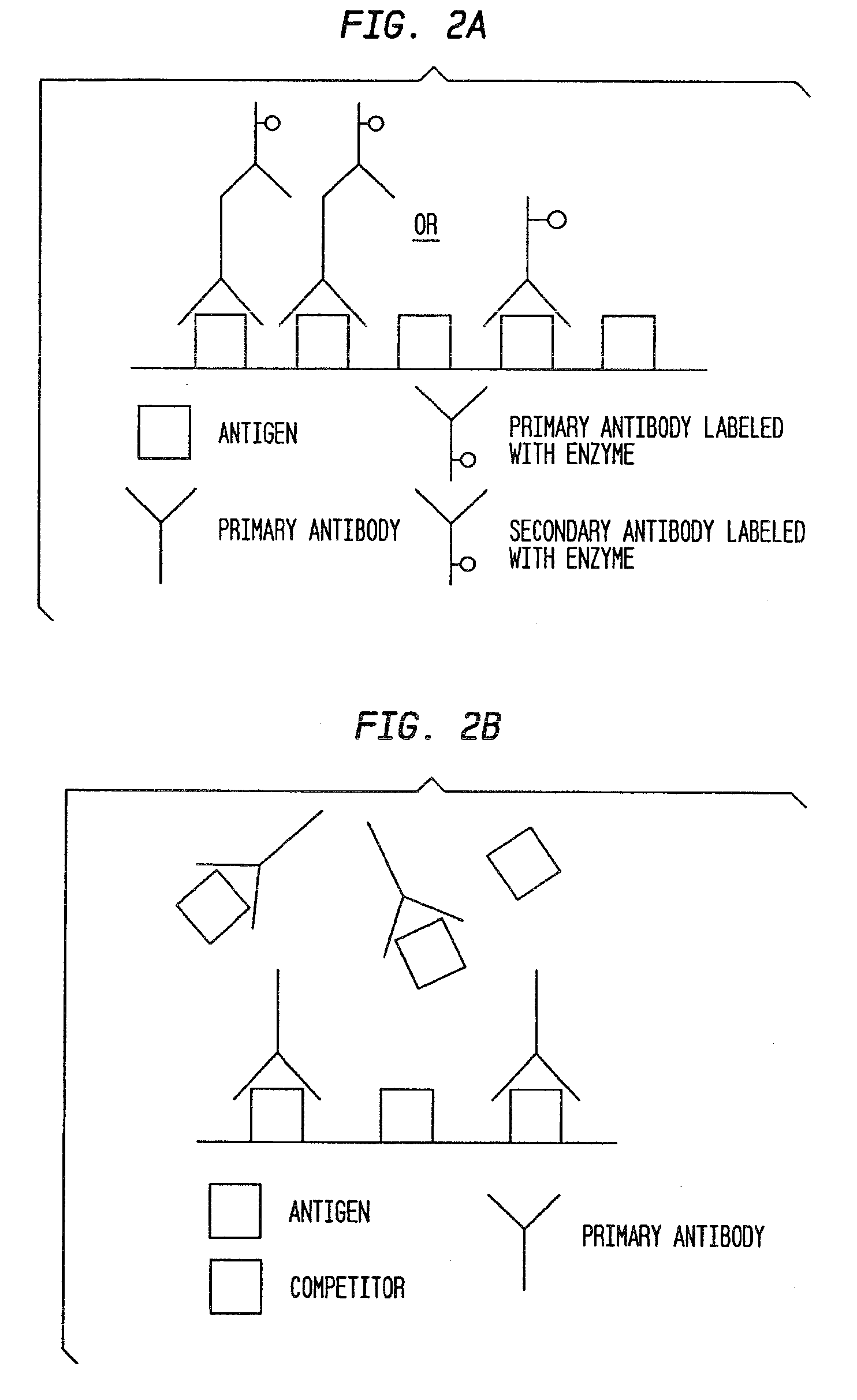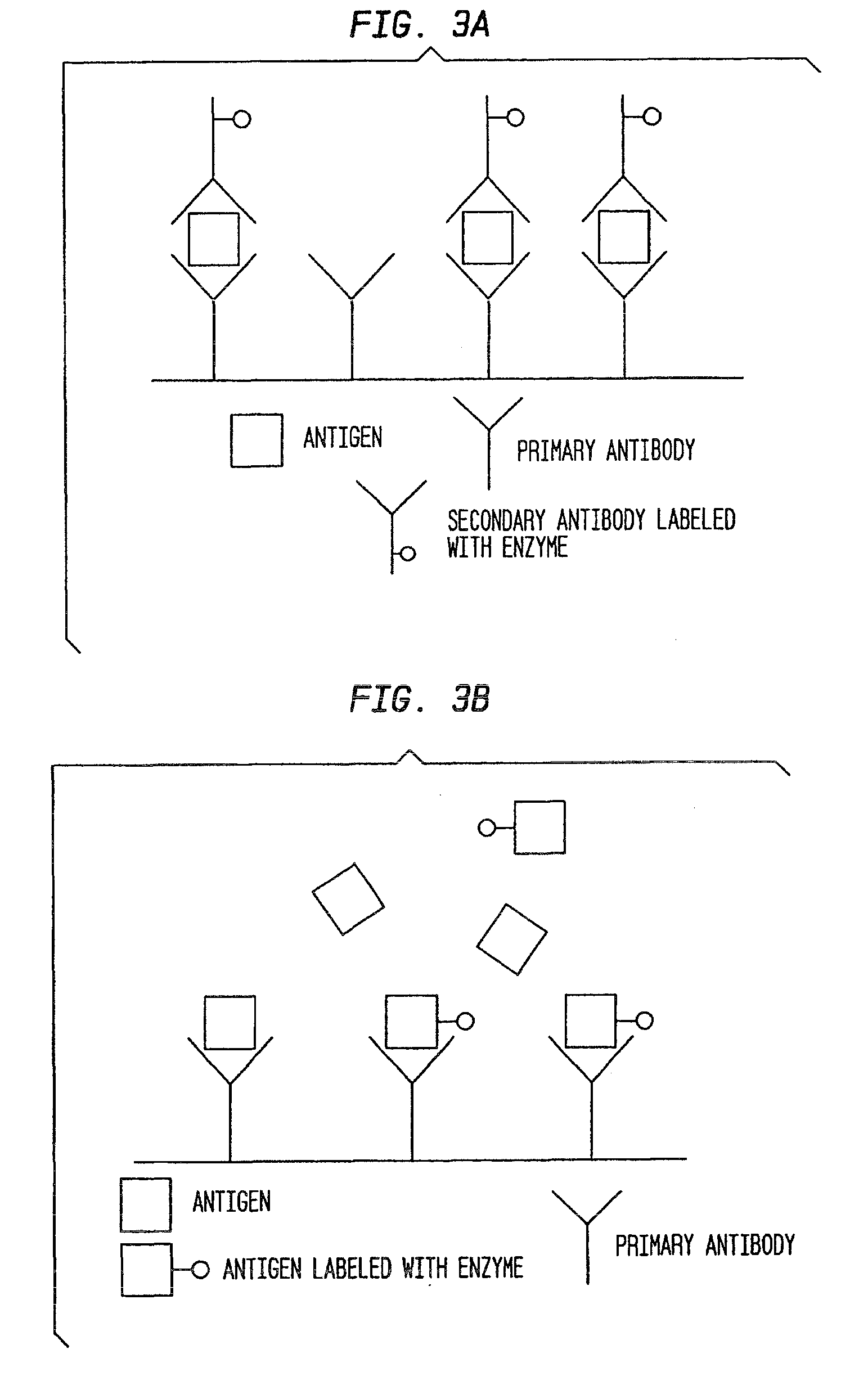Antibody-based gamma-hydroxybutyrate (GHB) detection method and device
- Summary
- Abstract
- Description
- Claims
- Application Information
AI Technical Summary
Benefits of technology
Problems solved by technology
Method used
Image
Examples
example 1
[0052]3-amino-4-hydroxybutyric (GOBAB) acid was coupled to BSA and KLH using gluteraldehyde (GA) and bis[sulfosuccinimidyl]suberate (BS3) coupling reagents yielding 4 variants of GHB-labeled conjugates. These were dialyzed against PBS to remove the remaining reagents and then tested for conjugation. The GOBAB-BS3-KLH conjugate was chosen for further work. Two rabbits were immunized and the boosts were performed 3, 6, and 9 weeks after the initial immunization. The serum was collected 10 days after each boost. GOBAB was crosslinked to a 96-well polystyrene plate via a maleic anhydride linker anchored in the plate for testing of ELISA via the method as depicted in FIG. 1B. It yielded a positive signal upon addition of primary and secondary antibodies, when the conjugated horseradish peroxidase reacted with its substrates. The signal was significantly larger in the wells with GHB-linked to the well as compared to the control wells that had nothing or BSA linked to the bottom of the wel...
example 2
[0053]In order to produce an ELISA, indirect or direct, antibodies needed to be produced that can select for GHB. However, due to its small size, GHB does not illicit a sufficient immunological response. Therefore, a GHB analog, GOBAB (3-amino-4-hydroxy butyric acid), was chosen to crosslink to a large protein, KLH (keyhole limpet hemocyanin) (see FIG. 4). The resulting conjugated protein was then boosted in two rabbits at Spring Valley Laboratories to produce polyclonal antibodies.
[0054]When the antibodies returned from Spring Valley, an indirect ELISA with competition was first developed to determine the ability to detect GOBAB and GHB. Data can be seen in Tables 1-2 and FIGS. 5-6. Experiments 1 and 2 were run in duplicate. The results confirmed that the antibodies detected both GOBAB and GHB.
example 3
[0055]Additional indirect competition tests were performed to develop a standard curve for different GHB concentrations. Competitive amounts of GHB ranged from 10 mM to 200 mM so as to include the cut off point for blood and urine at the low end of the curve and test for the high concentration of GHB used in a date rape scenario. See Table 3 and FIG. 7 (results of Experiment 3), which clearly illustrate that as the competition of GHB increases, the absorbance decreases confirming that the antibodies contemplated by the present invention detect GHB.
TABLE 1Results of Experiment 1 (the absorbance for a preliminary test).TemplateBlkGOBABBSA1-IgG2-IgGS / SBlkGOBABBSA1-IgG2-IgGS / SData0.0550.320.180.430.8420.0670.0580.3330.170.4010.7560.05Blk—Blank,G—GOBAB linked to the plate,BSA—BSA linked to the plate,1-IgG - Primary antibody from Spring Valley linked to the plate,2-IgG - Secondary antibody (HRPO from Sigma) linked to the plate, andS / S—Substrate and stop solutions.
TABLE 2Results of Experim...
PUM
 Login to View More
Login to View More Abstract
Description
Claims
Application Information
 Login to View More
Login to View More - R&D
- Intellectual Property
- Life Sciences
- Materials
- Tech Scout
- Unparalleled Data Quality
- Higher Quality Content
- 60% Fewer Hallucinations
Browse by: Latest US Patents, China's latest patents, Technical Efficacy Thesaurus, Application Domain, Technology Topic, Popular Technical Reports.
© 2025 PatSnap. All rights reserved.Legal|Privacy policy|Modern Slavery Act Transparency Statement|Sitemap|About US| Contact US: help@patsnap.com



